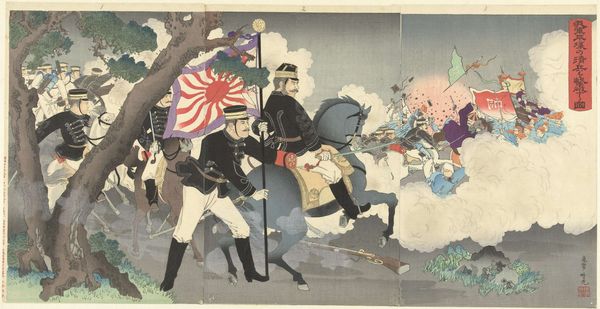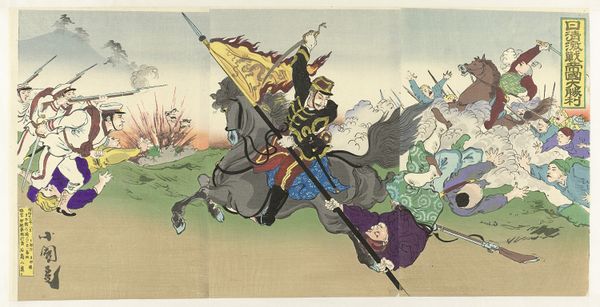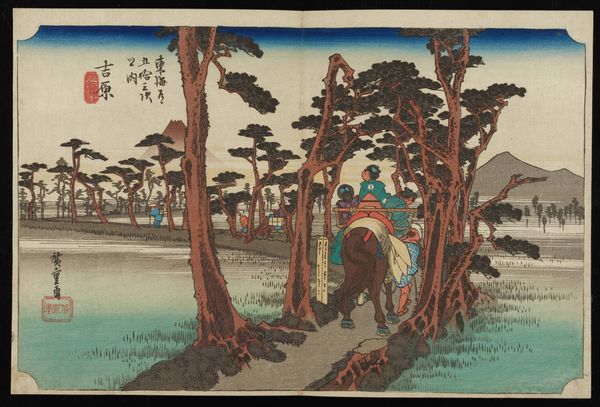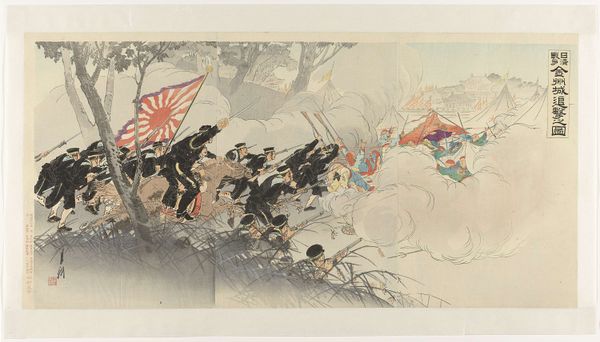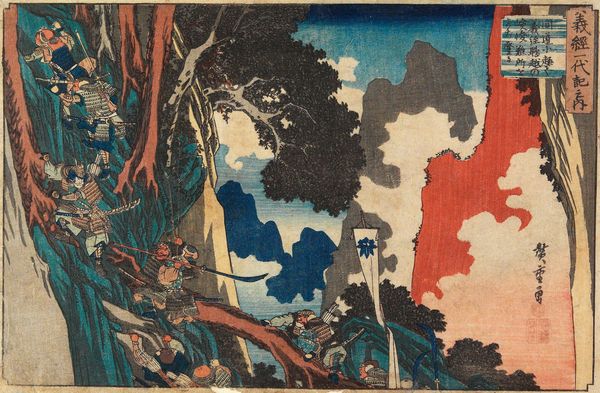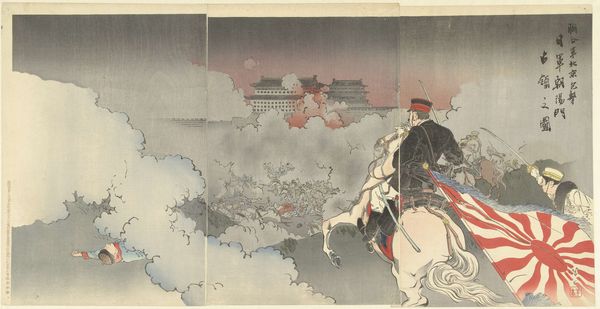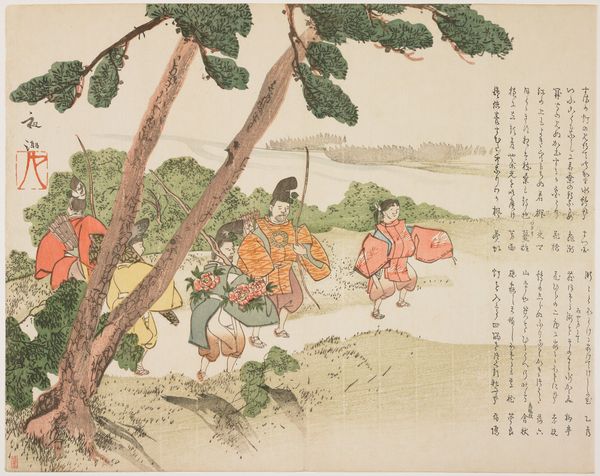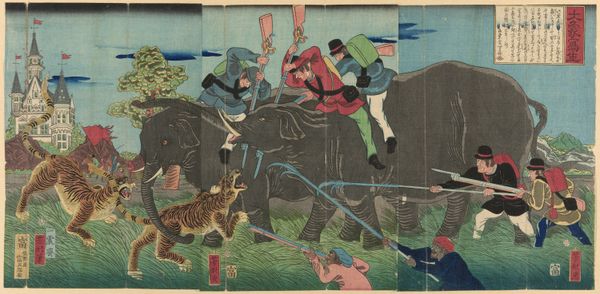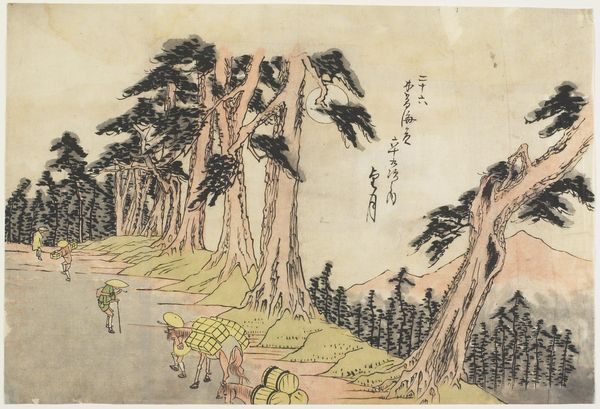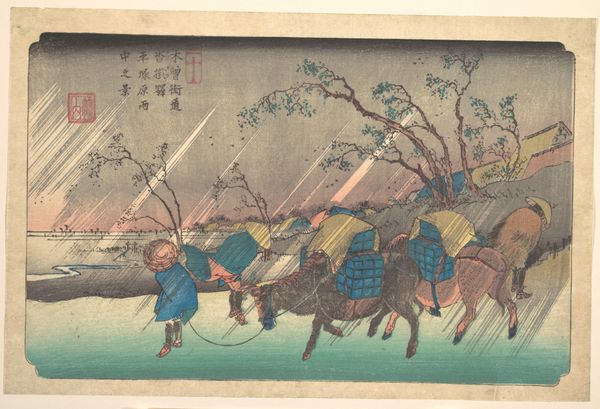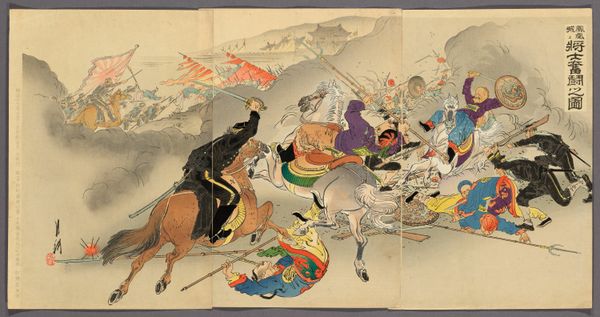
The First Division Advancing on Fengtienfu (Daiichigun Hotenfu shingeki no zu) 1894
0:00
0:00
Copyright: Public Domain
Curator: So here we have "The First Division Advancing on Fengtienfu," a woodblock print created in 1894 by Ogata Gekko. Editor: Wow. Immediately, it feels epic. You know, grand scale even though it’s a print. Like peering through a smoky battlefield right into a pivotal historical moment. All those blurred figures – haunting, really. Curator: Indeed. Gekko produced this work during the First Sino-Japanese War, and prints like these played a significant role in shaping public opinion. The war was framed as Japan asserting its modernity and civilizing influence in Asia. Editor: So, like visual propaganda? Is that a fair way to put it? Although, I am kinda seduced by the aesthetics here, even with the smoky chaos of it all. Look at that huge pine tree, like nature is holding its breath observing human violence. Curator: Yes, “propaganda” isn't necessarily a negative term here, just that imagery such as this contributed to the overall pro-war environment in Japan. These prints circulated widely, fostering national pride. Editor: Fascinating, I can see the… I almost hate to use this word because it's overused, but… "narrative." The officers are clear. Solid. Whereas all those figures are consumed by war's mists and chaos. A romantic spin maybe? It sure beats newspaper reporting. Curator: Well, that selective framing contributed to what became known in Western terms as “Orientalism." Japan strategically constructed its image as a powerful, modern nation on par with Western powers, so the narrative has very interesting parallels to, say, imperial Britain. The floating world style adds to the stylized version of conflict too, despite its very real toll. Editor: Right, and it is weird that, from today's lens, it's visually quite appealing. Even kinda soothing in an odd way. Is that messed up? It must say something that violence, when filtered through skillful design, becomes almost… palatable? Like a dangerous candy coating. Curator: Exactly. Art's complicated relationship with power and how we interpret it. It can simultaneously mask and reveal layers of social meaning. It's vital to not just passively look, but unpack why. Editor: Point taken! I'll ponder that on the way out and maybe lay off the sugar. Curator: Good plan, maybe that gives the art something to continue doing, its work after we are gone.
Comments
No comments
Be the first to comment and join the conversation on the ultimate creative platform.

